Hyde’s wordless novel, Southern Cross, was his reaction to the testing of nuclear bombs in the South Pacific following the end of the World War Two.

1925 Translation of Krakatit
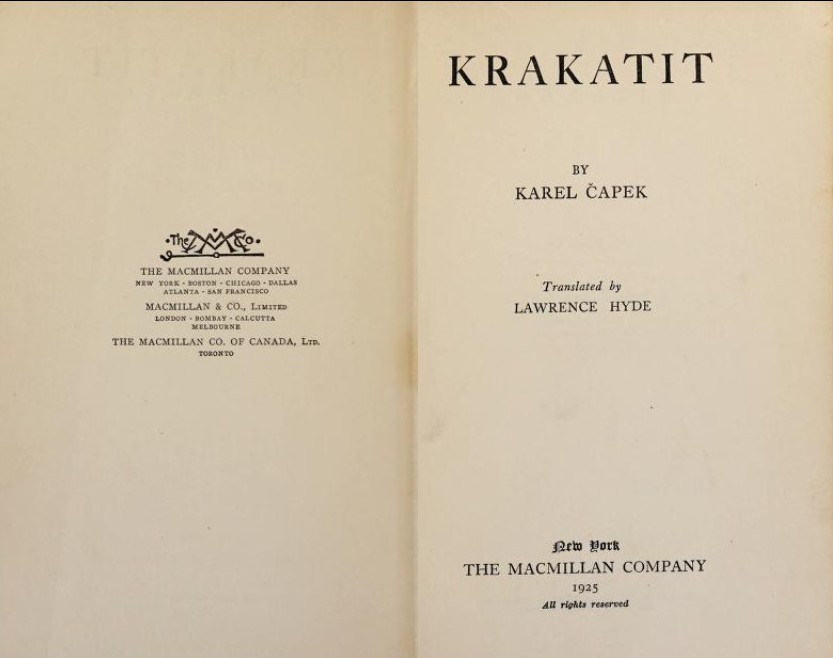
Image from the Internet Archive.
NOTE: Hyde translated Krakatit by Karel Capek, a novel cited by some as being the first nuclear thriller, in which an engineer develops an explosive of world destroying power that can be detonated by remote control. Krakatit was first published in English in 1925. This work seemingly predicted the atom bomb over two decades before The Trinity test of the Manhattan Project in 1945.
This may have influenced his work on Southern Cross.
Hyde background
Laurence Evelyn Hyde: Born June 6, 1914 in the United Kingdom but immigrated to Canada with his parents in 1926. Hyde was a Canadian film maker, painter, and graphic artist, known for his work with the National Film Board of Canada and stamp designs for the Canadian Postal Service.
In 1934 Hyde worked on a series of engravings tentatively titled Discovery. They were intended to tell the story of the Viking discovery of America. Not all the intended blocks were cut and the story was never published.
Southern Cross: A Novel of the South Seas
Hyde’s only wordless novel is Southern Cross, published in 1951. It is a fictional story about a fictional family on a fictional island and not to be confused with the 24 detonations of nuclear weapons on Bikini Atoll between 1946 and 1958.
It tells the story of the USA Navy evacuating a south pacific island prior to testing a nuclear weapon and a family of three fleeing the evacuation only to end up exposed to radiation.

- Title: Southern Cross: A Novel of the South Seas
- Description: The book consists of 118 wood engravings. The story is a reaction to the testing of atomic bombs in the South Pacific following the end of the World War Two; the evacuation by American sailors of indigenous peoples living on a Polynesian island in the region, and the consequent destruction of their way of life.
- Author and Illustrator: Laurence Hyde
- Introduction: Rockwell Kent
- Publication Date: November, 1951
- Publisher: The Ward Ritchie Press
- Place of publication: Los Angles, CA
- Printer: The Ward Ritchie Press
- Copyright: Laurence Hyde
- Size: The pages for the hard cover and the soft cover are the same size.
- The cover for the hard cover is marginally larger than the soft cover: 7 5/16 x 6 3/8″ (18.3 x 16.2 cm)
- Dust jacket: No? – may have been issued with a clear DJ
- slipcase: No?
- Binding:
- hard cover – quarter red cloth over black paper boards
- soft cover – thin card
- Cover: cloth for the hard cover
- Language: English titles, etc
- Paginated: unpaginated
- Printed: images recto; 255 (or 235?) pages
- Edition: Trade only
- 118 wood engraved blocks were used. Hyde, in his introductory note makes the distinction between the coarser wood “cuts” and the finer details achieved with wood “engravings” he used for Southern Cross.
- Printed from the original blocks
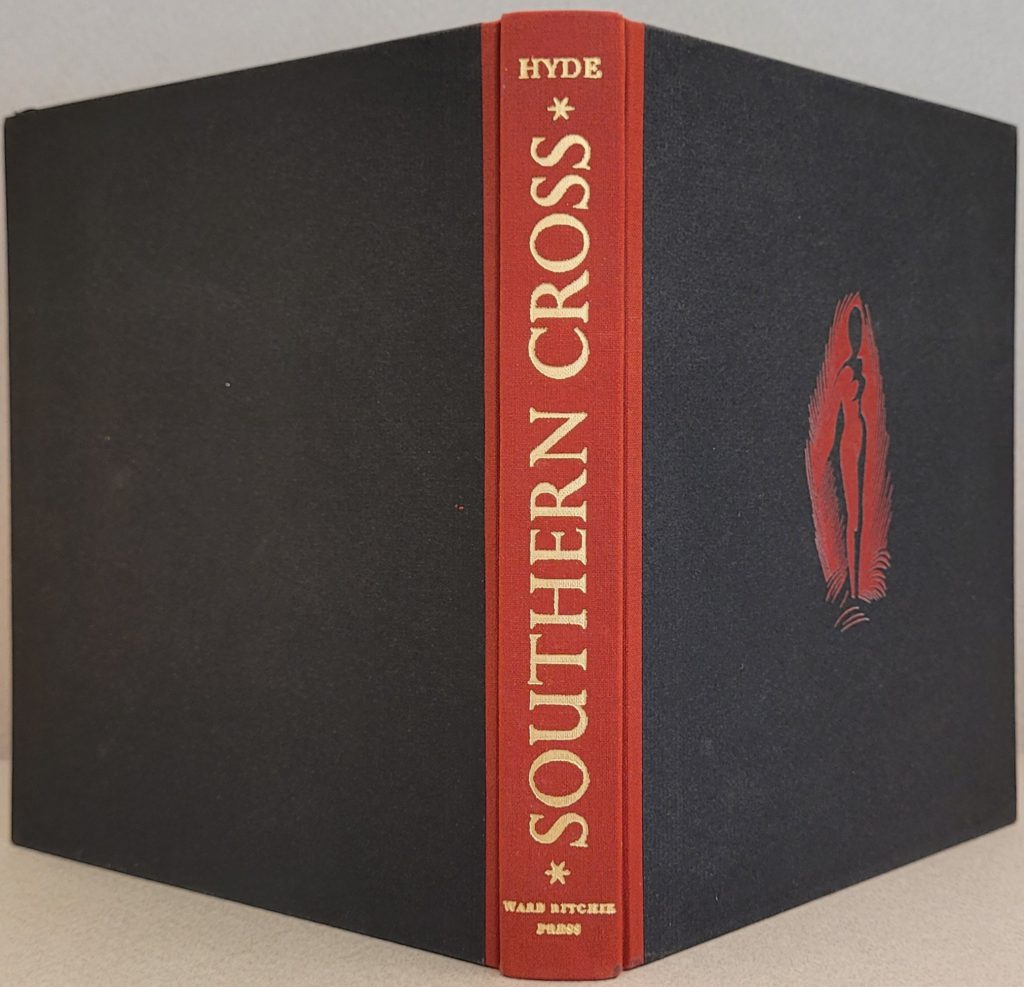





“printed from the original wood blocks”.
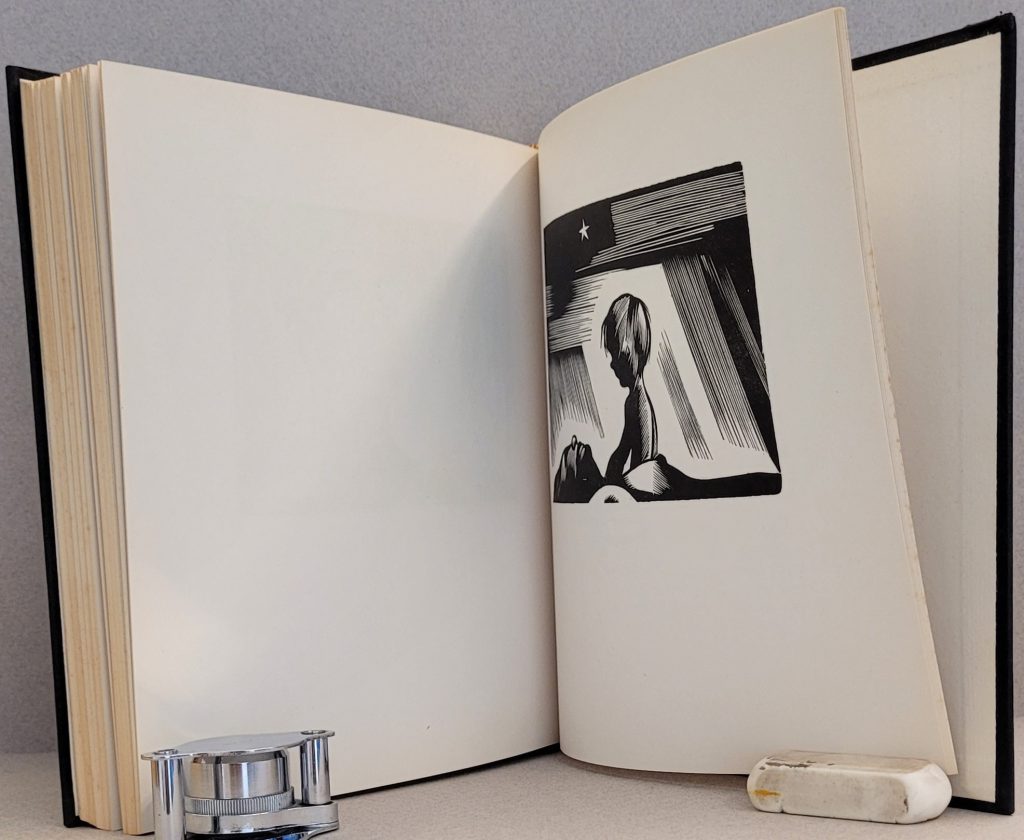
staring out over his dead mother.
Soft cover edition
– the same in every respect except for the soft cover
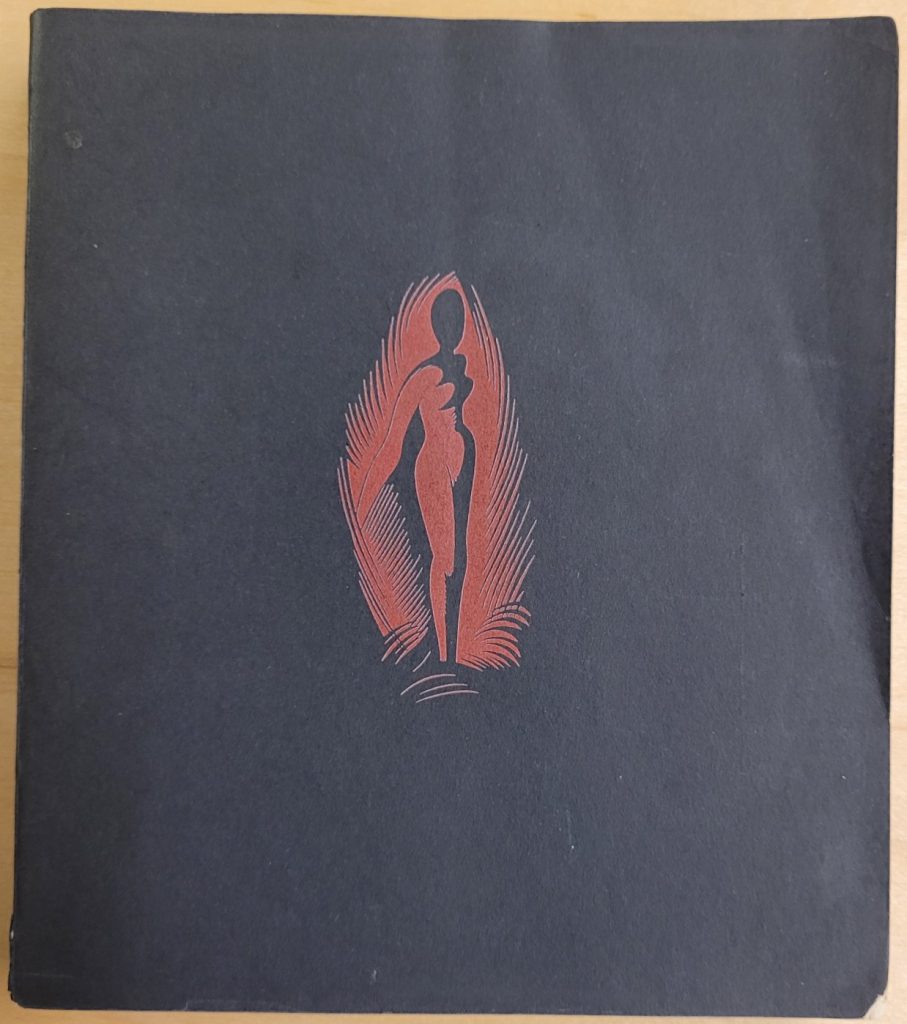
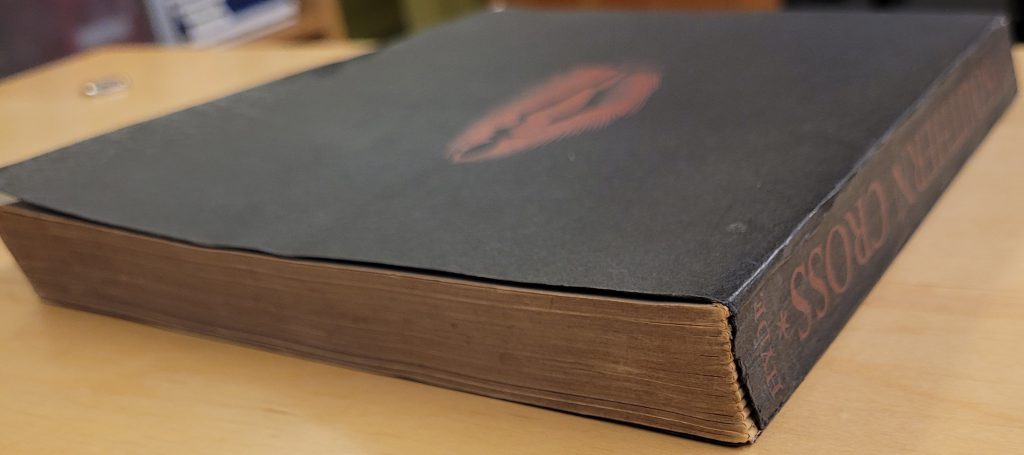
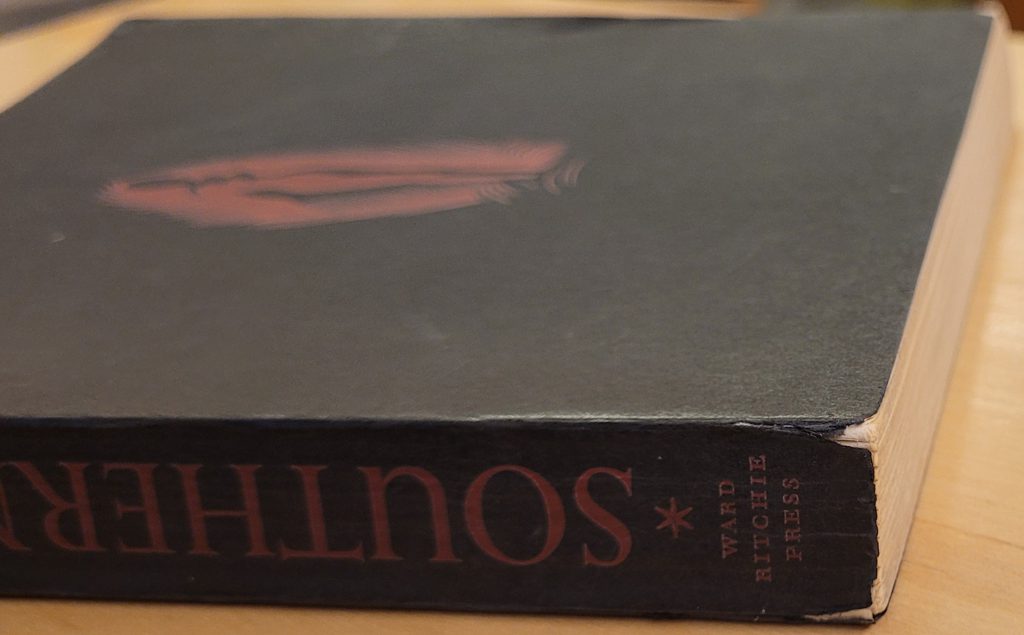
COMMENTS
If you disagree with something on this page, have an improvement, or have any other comments please contact me
wn at wordlessnovels.com
Any information used will be given a credit line.